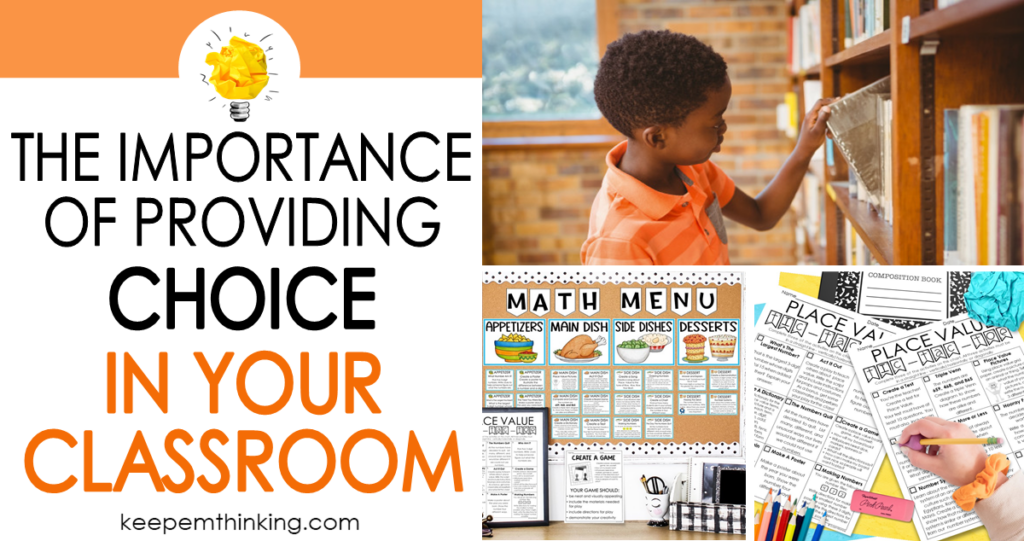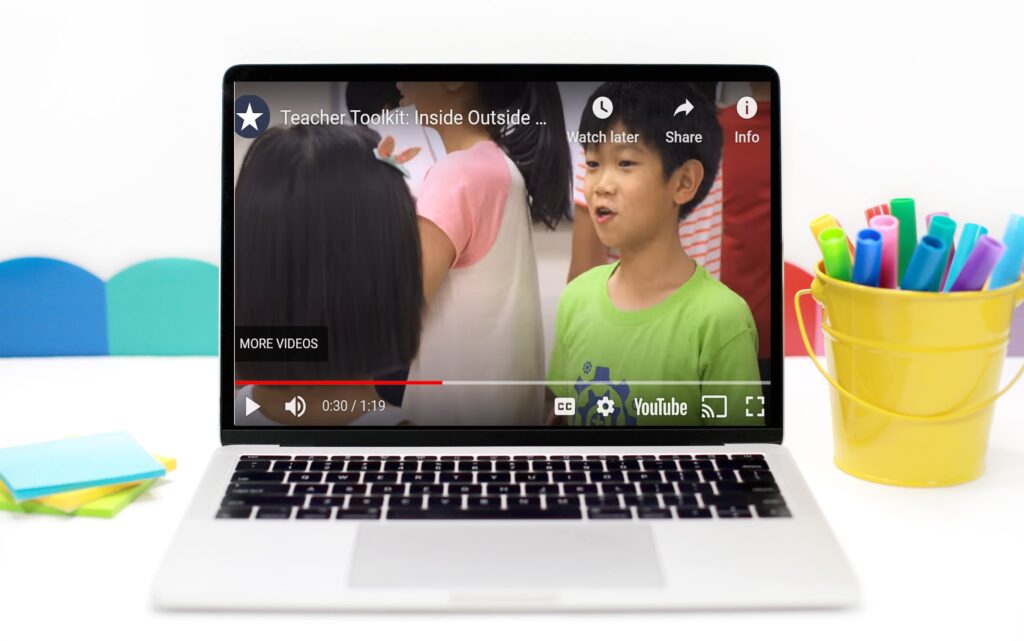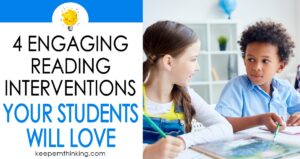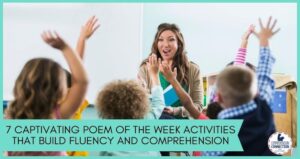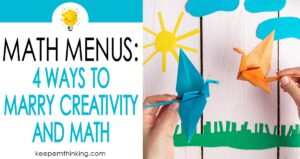Whenever I step into a classroom, I can’t help but notice the diverse group of young students. Some kids are great readers, devouring books with ease, while others struggle and find each sentence challenging. This difference in reading ability is a common occurrence in almost all classrooms.
Traditional teaching methods often leave behind either the struggling reader or the one who is miles ahead. Trying to meet the needs of all these students is a challenge. In this blog post, I want to share some creative open-ended reading interventions or strategies that not only lift up those who lag behind but also provide wings to those ready to soar.
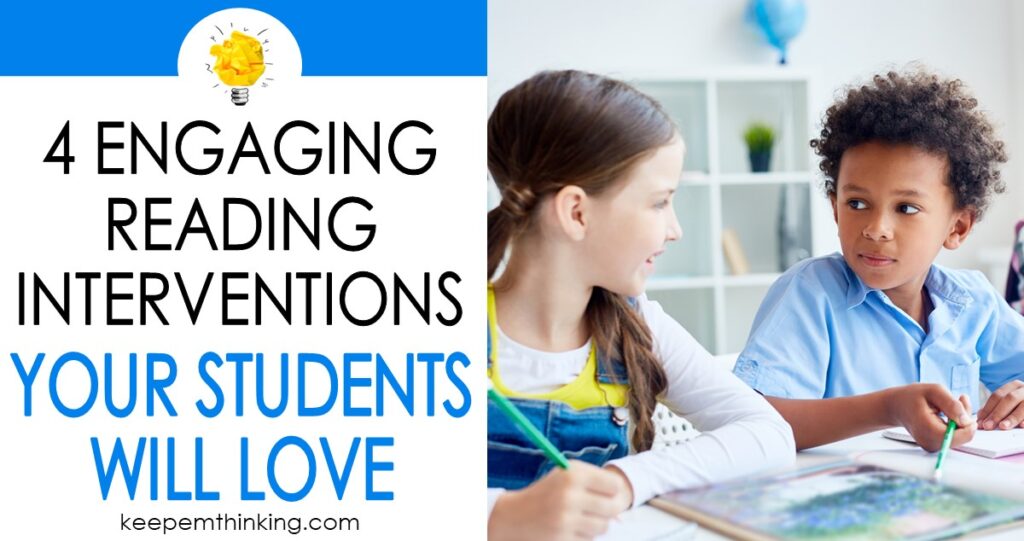
The concept of creative reading interventions emerged from a simple truth: no two students learn the same way. In a classroom buzzing with unique personalities and varied learning paces, a one-dimensional approach to reading is like fitting square pegs into round holes. Creative reading interventions are those teaching methods and activities that step outside the conventional box, embracing the diversity of learners.
Open-Ended Activities: Reading Interventions For All Learners
Open-ended activities go beyond traditional classroom tasks by inviting students to engage with content on a deeper level. These activities are designed to stimulate thought, creativity, and personal expression, allowing students to demonstrate their understanding in unique ways. This approach not only accommodates diverse learning styles but also fosters critical thinking and problem-solving skills.

#1 Reading Interventions: Open-Ended Questions
Reading interventions such as open-ended questions are a cornerstone of differentiated instruction in reading. Open-ended questions provide a dynamic framework for students to explore texts deeply and express their understanding in nuanced ways. Unlike closed-ended questions, which typically seek specific, factual answers, open-ended questions invite a range of responses, encouraging students to think critically, make connections, and articulate their interpretations and feelings about the text.

The Power of Open-Ended Questions
Open-ended questions are one of the easiest reading interventions to implement and serve multiple purposes in the classroom. They:
- Encourage Critical Thinking: By asking questions that don’t have a single correct answer, students are prompted to analyze the text more deeply, evaluate different perspectives, and develop their viewpoints.
- Foster Engagement: These questions allow students to connect personally with the material, making the reading experience more relevant and engaging.
- Support Differentiated Instruction: Reading Interventions like open-ended questions provide an accessible entry point for all students, regardless of their reading level. Each student can respond based on their comprehension and interpretation, allowing for a broad range of answers that reflect diverse thinking and learning styles.
Implementing Open-Ended Questions in Reading
- Pre-reading: Use open-ended questions to activate prior knowledge and set the stage for new learning. For example, What do you think this story might be about based on the title and cover?, or Have you ever experienced something similar to what you think might happen in this story?
- During Reading: To keep students engaged and thinking critically about the text as they read, ask questions like, Why do you think the character made that choice?, or How do you think this event might affect the outcome of the story?
- Post-Reading: These questions can help students synthesize information and reflect on the reading experience. Examples include, What do you think was the author’s message, and why?, or How has your understanding or perspective changed after reading this text?
Reading Interventions – How to Differentiate Open-Ended Reading Questions
- Layered Complexity: Adjust the complexity of the questions to match the needs of different learners. For struggling readers, questions might focus on personal connections and basic comprehension. For advanced learners, questions can push for deeper analysis and synthesis of themes and concepts.
- Choice Boards: One of the easiest reading interventions is to provide a list of open-ended questions and allow students to choose which ones they want to respond to. This strategy empowers students by giving them control over their learning and encourages them to tackle questions that genuinely interest them.
- Multimodal Responses: Encourage students to express their answers in various formats, such as written responses, oral discussions, drawings, or even digital presentations. This flexibility supports diverse learning preferences and allows all students to showcase their understanding in the way they feel most confident.
Implications of Using Open-Ended Reading Questions
Cultivating an environment where open-ended questioning is the norm rather than the exception encourages a culture of inquiry and discussion. Reading interventions such as open-ended questioning support a growth mindset, where students feel safe to express their ideas, ask their questions, and learn from both their peers and their reflections.
Incorporating open-ended questions into reading instruction is more than just a strategy; it’s a shift towards a more inclusive, engaging, and student-centered approach to learning. By embracing the complexity and richness of students’ thoughts and experiences, teachers can foster a deeper connection to literature and learning, preparing students not just to answer questions about a text, but to question the world around them with curiosity and confidence.

#2 Reading Interventions: Open-Ended Graphic Organizers

Graphic organizers are versatile reading interventions. They facilitate structured thinking and learning while effectively supporting students across different levels of comprehension and engagement. By visually mapping out concepts, relationships, and ideas, graphic organizers help students organize their thoughts, enhance understanding, and retain information. Their adaptability makes them particularly useful for differentiating instruction, catering to the needs of struggling readers as well as challenging advanced learners.
Benefits of Graphic Organizers in Reading
- Visual Representation of Information: Helps students visualize relationships between concepts, characters, events, and themes, making complex information more accessible.
- Enhances Comprehension: By breaking down texts into manageable components, graphic organizers can aid in understanding narrative structures, character developments, and key details.
- Supports Critical Thinking: Encourages students to analyze and synthesize information, drawing connections and making inferences beyond the surface level of texts.
- Facilitates Memory Retention: The visual nature of graphic organizers aids in the retention of information, making it easier for students to recall details and concepts.
Types of Graphic Organizers and Their Uses

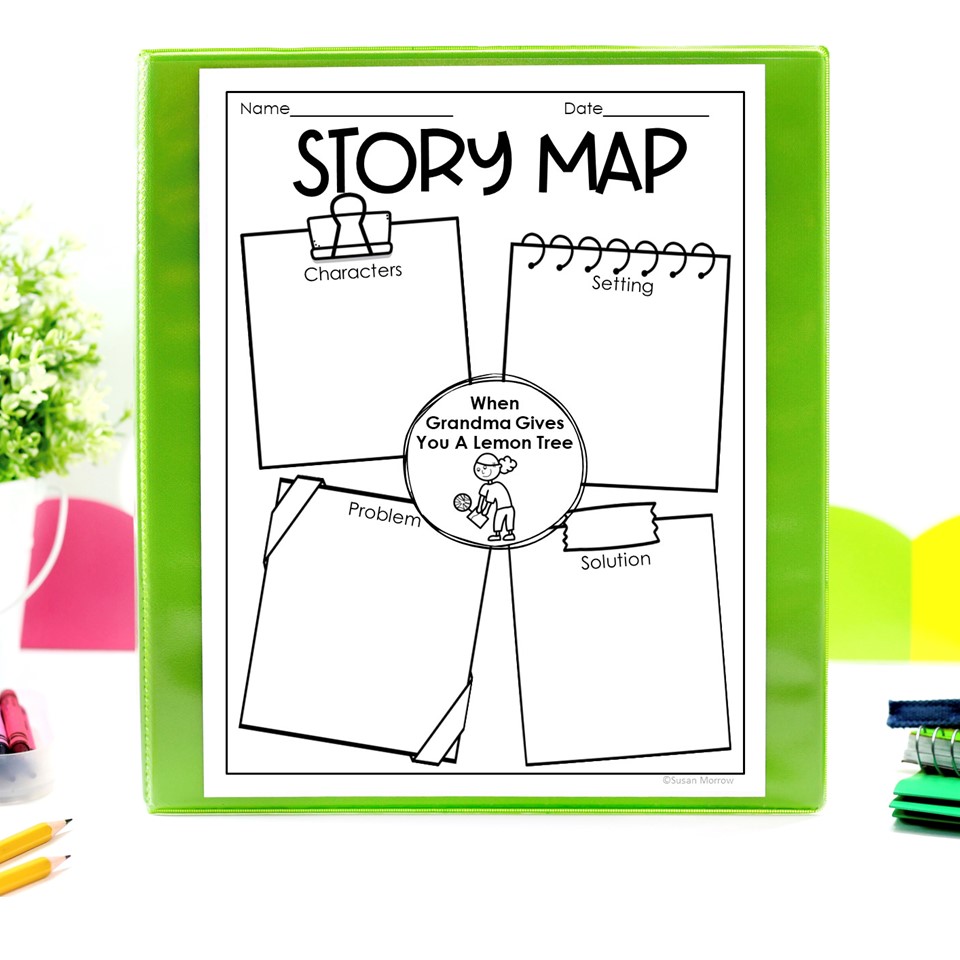

Venn Diagrams: These organizers are excellent for comparing and contrasting characters, themes, or events within or across texts, facilitating a deeper understanding of the material.
In the realm of open-ended activities, Venn diagrams emerge as a versatile tool that facilitates deep engagement with texts, especially in comparing and contrasting characters. This strategy exemplifies how a simple graphical organizer can be adapted to serve the diverse needs of students within a classroom, from those requiring additional support to those ready for more complex challenges.
Venn Diagrams for Character Comparison
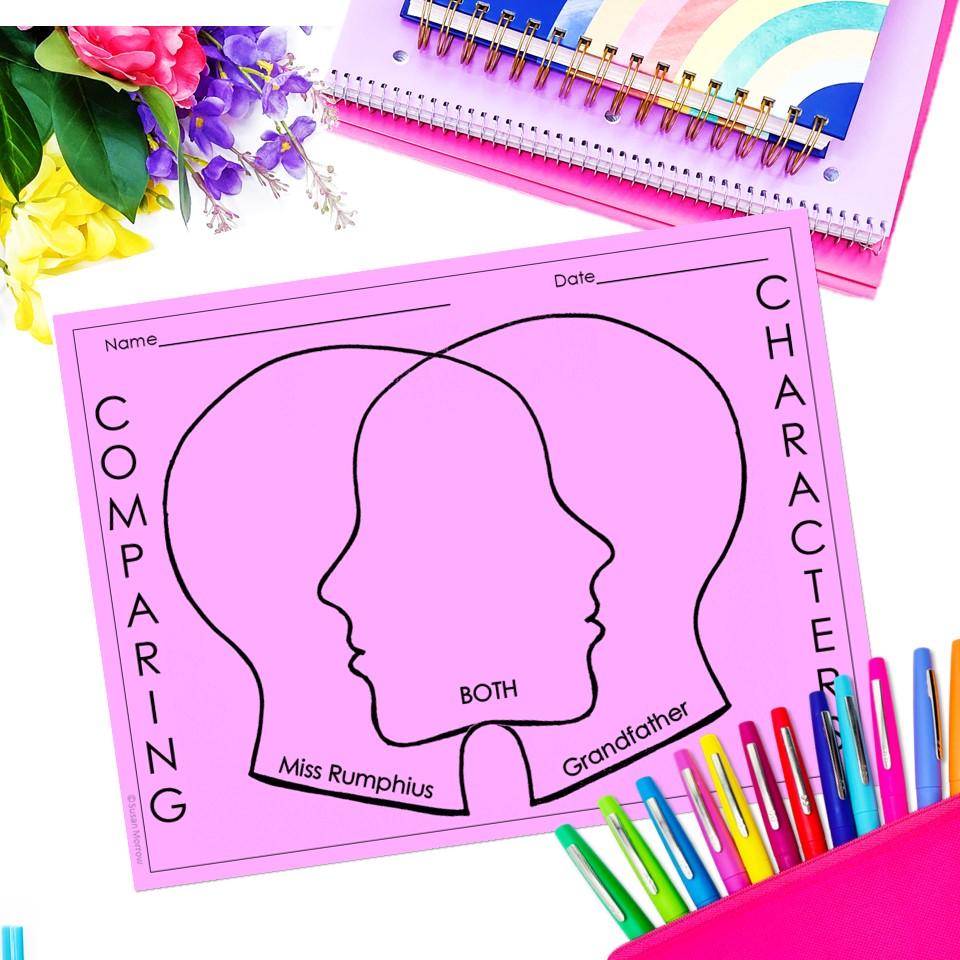
Venn diagrams enable students to visually map out similarities and differences between characters in a story. This activity encourages analytical thinking as students must delve into the text to identify traits, motivations, relationships, and development arcs of the characters. For struggling readers, this can be a concrete way to organize their thoughts and engage with the narrative on a deeper level without the pressure of producing extensive written analysis.
Differentiation Through Triple Venn Diagrams
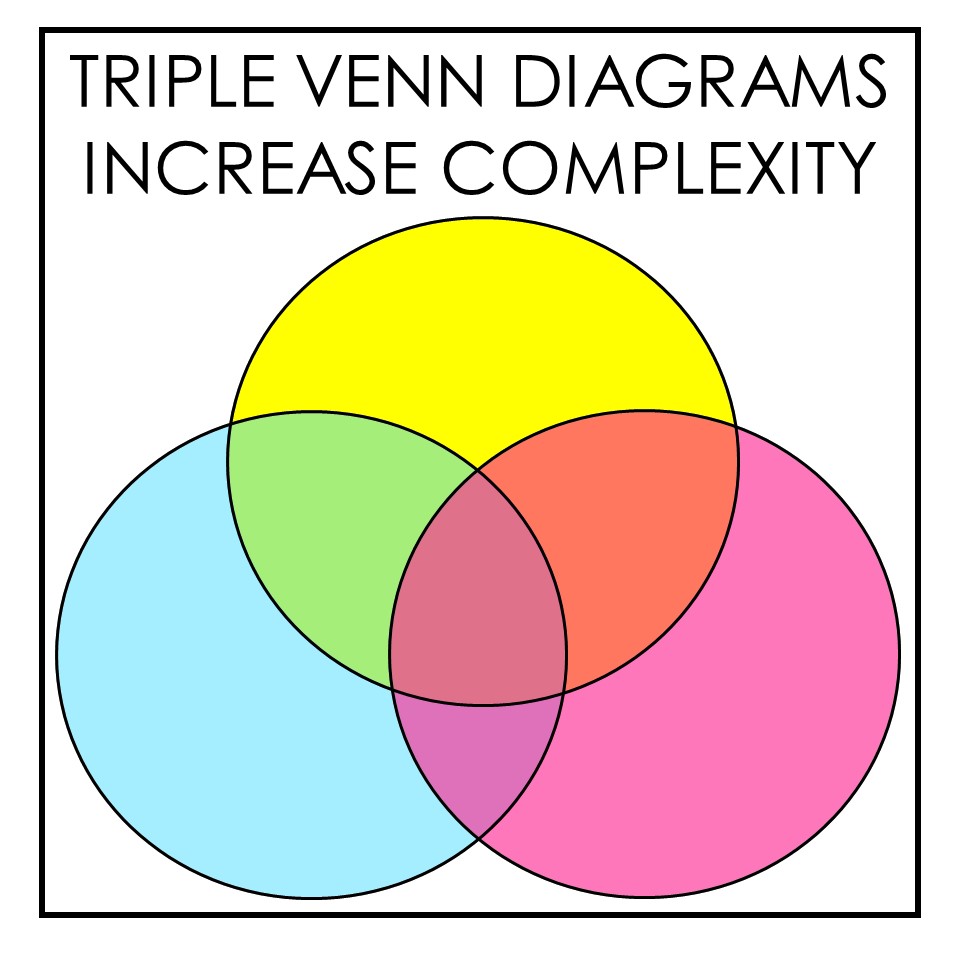
For advanced learners, the challenge and complexity of the task can be increased by introducing triple Venn diagrams. Unlike the traditional two-circle Venn diagram, a triple Venn diagram includes an additional circle, allowing for a more nuanced comparison among three characters or elements within the story. This added layer demands a higher level of critical thinking and analytical skills, pushing students to identify not only binary relationships but also to explore the dynamic interplay among three distinct elements.
Implementing the Strategy
- Introduction and Modeling: Begin by introducing the concept of the Venn diagram, using a simple example unrelated to the text. This can help all students grasp the basic idea of comparing and contrasting using this visual tool.
- Guided Practice with Dual Circles: Start with a standard Venn diagram comparing two characters. Provide scaffolding for struggling readers, such as a list of character traits or direct quotes from the text to consider. This step ensures that all students can participate and gain confidence in their analytical abilities.
- Independent Exploration with Triple Circles: Transition to the triple Venn diagram for those ready for more complexity. This could involve comparing three characters, or two characters and the reader’s own personality, adding a personal reflection component to the exercise. Advanced learners can be encouraged to explore themes, motifs, or conflicts represented by the characters, going beyond surface-level comparisons.
- Reflection and Discussion: Encourage students to share their diagrams and the insights they’ve gained. This not only fosters communication skills but also allows students to learn from each other’s perspectives. It’s an opportunity for struggling readers to deepen their understanding through peer explanations and for advanced learners to articulate their more complex analyses, benefiting the entire classroom community.
Adapting the Strategy
To further adapt this strategy for diverse learners, consider:
- Providing a template with prompts or questions in each section of the diagram for students who need more structure.
- Encouraging advanced learners to create their own Venn diagrams on themes or abstract concepts within the story, beyond character comparison.
The use of Venn diagrams, particularly the transition from dual to triple diagrams, is one of many reading interventions for engaging students with varying needs in a reading intervention. This approach not only accommodates different learning styles and abilities, but also encourages a deeper interaction with the text. By differentiating the complexity of the task, educators can ensure that every student finds a point of entry into the analysis that is both challenging and achievable, fostering a richer understanding of literature and enhancing critical thinking skills.
Story Maps: This type of graphic organier is ideal for outlining the narrative structure of a text, including the setting, characters, conflict, plot events, and resolution. Story Maps can help struggling readers track the main components of a story and challenge advanced readers to delve deeper into the narrative’s intricacies.

Character Trait Charts: These charts allow students to explore and document the traits, motivations, and developments of characters. For advanced learners, this can extend to analyzing how character dynamics influence the plot and themes.
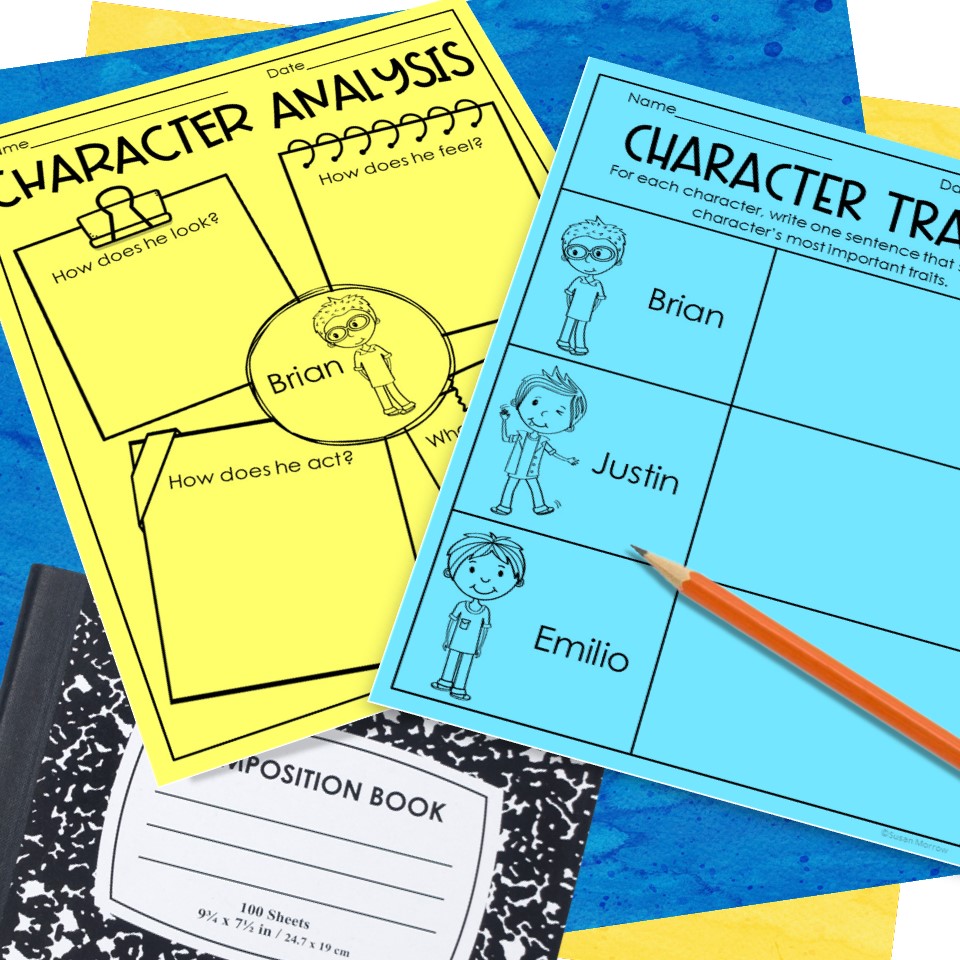
- Cause and Effect Chains: These organizers help students identify and visualize the relationships between events and their outcomes in a story. This not only aids comprehension but also encourages students to think critically about the consequences of actions within the narrative.
- Theme Webs: Theme webs encourage students to identify and connect various themes within a text. This can be particularly enriching for advanced learners, who can explore complex and nuanced themes, supporting their ability to engage with texts on a deeper level.
Implementing Graphic Organizers
- Modeling and Guided Practice: Initially, introduce graphic organizers through modeling and guided practice, ensuring students understand how to use them effectively. This approach is crucial for struggling readers who might need additional support.
- Independent Use and Exploration: As students become more comfortable, encourage independent use of graphic organizers, allowing them to choose the ones that best suit their learning styles and the task at hand. This autonomy can be particularly motivating for advanced learners.
- Creative Adaptations: Encourage students to adapt traditional graphic organizers creatively or even design their own, fostering creativity, personal engagement, and deeper comprehension.
Conclusion
Graphic organizers are not merely tools for organizing thoughts; they are gateways to deeper understanding, critical thinking, and engaged learning in the reading process. By incorporating these visual aids into reading interventions, educators can provide structured yet flexible support that meets the diverse needs of their students, promoting clarity, comprehension, and a love for reading.

#3 Reading Interventions: Reading Response Choice Boards
Reading Response Choice Boards are an innovative open-ended reading strategy designed to empower students by offering them a variety of response options tailored to different learning styles, interests, and comprehension levels. This approach not only enhances engagement and ownership over learning but also encourages students to explore texts more deeply and creatively. By providing a selection of activities, students can choose how they wish to demonstrate their understanding and thoughts about a reading, catering to both struggling readers and those seeking more of a challenge.
One of the key strengths of open-ended activities is the integration of student choice, which research has shown to increase motivation and engagement. By allowing students to select from various options or come up with their own projects, educators can tap into students’ intrinsic interests, making learning more meaningful and enjoyable.
Key Features of Reading Response Choice Boards
- Diverse Activities: The board includes a range of activities that appeal to different intelligences and learning preferences, such as visual, auditory, kinesthetic, and linguistic.
- Differentiated Learning: Activities can be customized to cater to various skill levels, ensuring that every student finds options that match their abilities and push their learning boundaries.
- Student Autonomy: Giving students a choice in how they respond to texts promotes autonomy, motivation, and engagement, leading to more meaningful learning experiences.
Examples of Activities on a Reading Response Choice Board
- Visual Representation: Create a comic strip that summarizes the story or illustrates a key scene. This activity appeals to visual learners and those who enjoy expressing ideas through art.
- Character Diary Entries: Write diary entries from the perspective of one of the characters, reflecting on events in the story. This task encourages empathy and a deeper understanding of character motivations and feelings.
- Theme Analysis: Identify and explain a central theme of the text, providing evidence from the story to support your analysis. This activity challenges students to engage critically with the text and is suitable for advanced learners.
- Soundtrack Creation: Choose songs that represent different characters or themes within the book and explain your choices. This unique, creative option can engage students who are particularly interested in music and how it can convey emotions and narratives.
- Interview with the Author: Write a set of interview questions you would ask the author about the book, including why certain elements were included and what message they hoped to convey. This encourages critical thinking about authorial intent and the crafting of narrative.
- Personal Connection: Reflect on an experience from your own life that relates to a theme or event in the book and describe the connection. This personal reflection can make reading more relevant and engaging for students.
- Alternative Ending: Write an alternative ending to the story, demonstrating understanding of the characters and plot while exercising creativity. This option is great for imaginative students who like to explore “what if” scenarios.
- Book Review Vlog: Create a video book review discussing what you liked, didn’t like, and how you would rate the book. This modern twist on book reporting can appeal to tech-savvy students and those who enjoy public speaking.
- Creative Storytelling: Students are given a prompt related to the reading material but are free to take their stories in any direction. Reading interventions such as creative storytelling encourage imagination and can be particularly empowering for struggling readers, offering them a way to engage with the text without the pressure of “right” answers.
- Design Projects: Whether constructing a diorama, creating a poster, or developing a digital presentation, design projects allow students to visualize and interpret texts creatively. These projects can be tailored to individual or group work, promoting collaboration and communication skills alongside reading comprehension.
- Philosophical Chairs or Debates: This activity involves discussing themes or moral questions from the reading, encouraging students to form and articulate their opinions. It’s a powerful way to engage advanced readers, pushing them to analyze texts critically and consider multiple viewpoints.
- Reflection Journals: Keeping a journal where students reflect on their reading can offer insights into their thought processes and feelings about the texts. This activity is particularly valuable for gauging student engagement and understanding, serving as a tool for both self-expression and assessment.
Implementing Choice Boards
To effectively implement reading response choice boards in the classroom:
- Introduce the Concept: Explain how the choice board works, highlighting the importance of choosing tasks that match learning goals and personal interests.
- Provide Support: Offer scaffolding for activities to ensure all students understand the expectations and feel confident in their ability to complete their chosen tasks.
- Encourage Reflection: After completing their chosen activities, have students reflect on their learning process, what they discovered about the text, and how their chosen method helped deepen their understanding.
Reading Response Choice Boards are a versatile and student-centered strategy that is an effective tool for designing reading interventions that accommodate diverse learning needs and preferences. Educators can create a stimulating and inclusive atmosphere by providing a variety of creative and analytical tasks. This approach motivates students to explore literature in ways that connect with them, promote deeper comprehension, and spark a lasting appreciation for reading.
Choice Boards can be used in any subject. Read about how I use choice boards in math in this blog post.

#4 Reading Interventions: Inside-Outside Circles

Using Inside-Outside Circles as a reading intervention fosters open-ended discussion, peer learning, and deeper comprehension. This technique involves students forming two concentric circles: an inner circle facing outward and an outer circle facing inward, with each student from the outer circle paired with a student from the inner circle. This setup facilitates a unique, face-to-face interaction that encourages students to share insights, ask questions, and engage in meaningful conversations about the text.
You can view this video about inside-outside circles by clicking the picture above.
Benefits of Inside-Outside Circles
- Promotes Active Listening and Speaking: Reading interventions such as inside-outside circles require students to listen carefully to their partners and articulate their thoughts clearly, enhancing communication skills.
- Encourages Peer Learning: Students learn from each other’s perspectives and interpretations, which can deepen their understanding and appreciation of the text.
- Engages All Learners: The strategy provides a platform for every student to voice their thoughts, making it one of the most popular reading interventions for those who may be less likely to participate in whole-group discussions.
- Facilitates Differentiated Learning: The teacher can tailor questions or discussion prompts to the needs of both struggling and advanced learners, ensuring that the activity is accessible and challenging for all.
Implementing Inside-Outside Circles for Reading
- Preparation: After reading a text, prepare a set of open-ended questions or discussion prompts that encourage deep thinking and reflection about the content, themes, characters, or author’s purpose.
- Instructions: Explain the structure of the Inside-Outside Circle to students, emphasizing the importance of active listening, respectful dialogue, and thoughtful responses.
- Discussion: Students in the inner circle begin by responding to a question or sharing an insight about the text. Their outer circle partner listens, then responds, adds to the discussion, or asks a follow-up question. After a set time, the outer circle moves one space to the right, pairing with a new partner for a fresh exchange of ideas.
- Rotation and Variation: Continue rotating until students have had the opportunity to discuss with multiple partners. To differentiate, vary the complexity of the questions or prompts as the activity progresses or adapt the focus based on the students’ reading levels and analytical skills.
- Reflection: Conclude with a whole-class reflection, allowing students to share something new they learned, a perspective they hadn’t considered, or questions they still have. This helps consolidate their learning and fosters a sense of community and shared inquiry.
- Desk Circle Alternative: This innovative twist on the traditional circle activity has partners move their desks to face each other, creating a long row. As the activity progresses, students stand and shift one desk to the left or right to change partners, ensuring everyone gets to interact with multiple classmates. This method encourages direct engagement and simplifies the process of switching partners, making it ideal for classrooms with limited space.

The Inside-Outside Circle is more than a discussion technique; it’s one of the most powerful reading interventions for building a classroom culture that values every student’s voice and perspective. By facilitating open-ended discussions in a structured yet flexible format, reading interventions such as these nurture critical thinking, empathy, and a deeper connection to literature. Among the various reading interventions, the Inside-Outside Circle stands out as a method that promotes inclusivity and unity among students. It motivates students to explore rich and diverse texts through collaboration and active participation.

Putting it All Together
Open-ended activities represent a dynamic and flexible approach to reading interventions, one that respects and nurtures the individuality of each student. By fostering creativity, critical thinking, and personal expression, these activities not only enhance reading comprehension but also build a foundation for lifelong learning. As educators, our challenge is to craft learning experiences that incorporate reading interventions with intentionality, ensuring that every student feels supported, challenged, and inspired to explore the vast world of literature and ideas.


